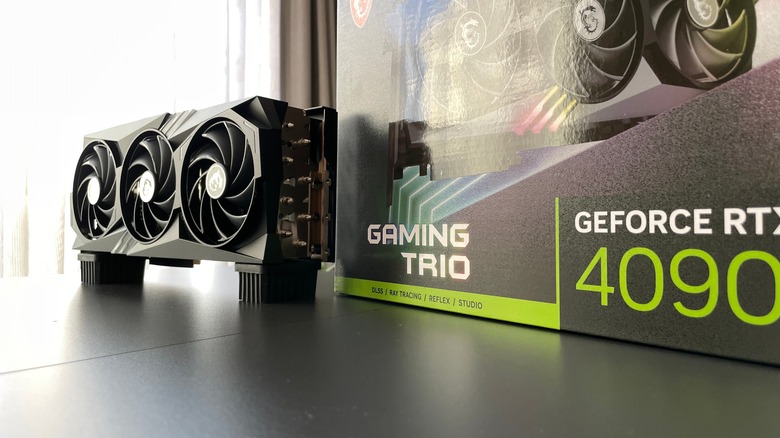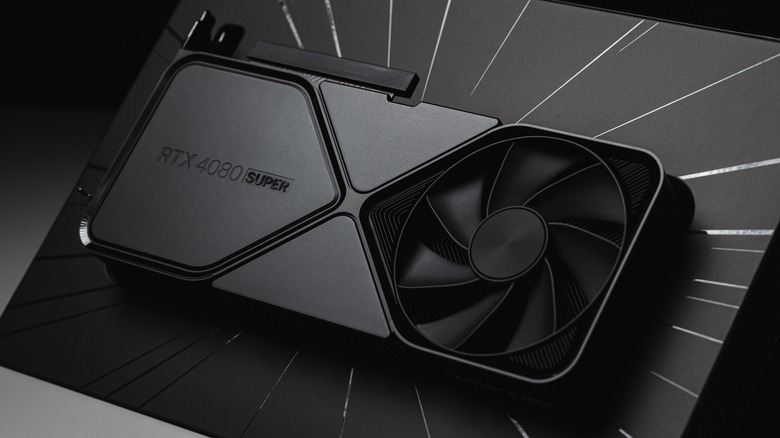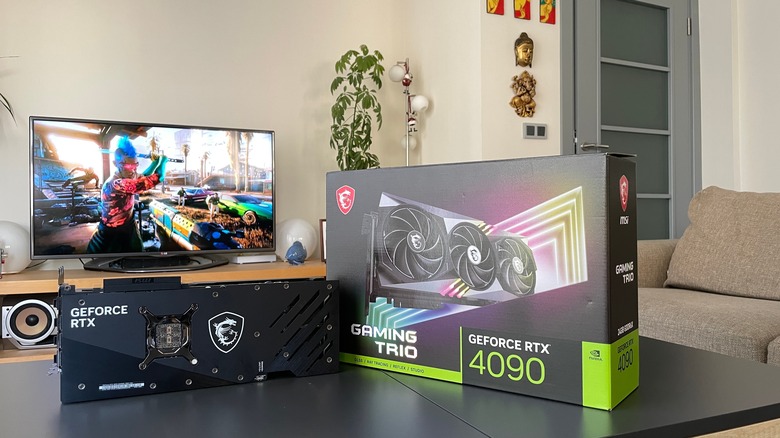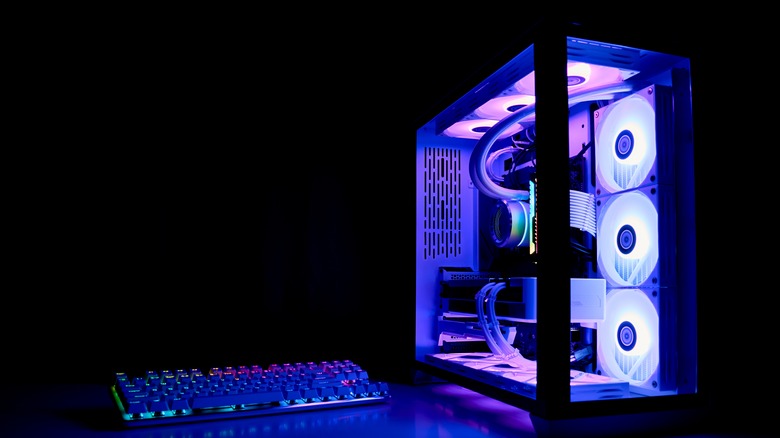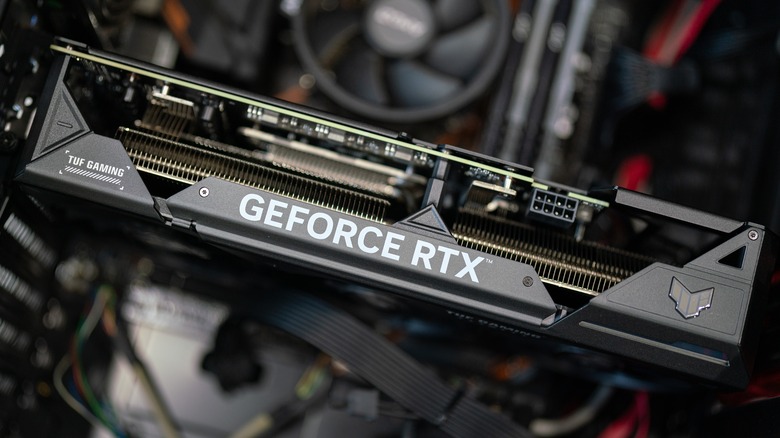Nvidia GeForce RTX 4080 Super Vs. 4090: Which Is The Better Graphics Card?
Nvidia's RTX 4080 Super and RTX 4090 are two of the most powerful graphics cards in the Ada Lovelace lineup. Both excellent, if slightly over the top for gaming — they're also great picks for content creation and various other resource-heavy workloads. But which one takes the crown as the go-to GPU of this generation?
The answer to this question is straightforward if you take pure performance into account: The RTX 4090 wins, no contest. The RTX 4090 is a rare sight indeed—it's a GPU that offers a massive generational leap, and it stands far, far above the rest of the lineup. The RTX 4080 Super is not without its perks, though. Coming in at $200 less than the non-Super version of the card, it fixes the main problem many people have had with the RTX 4080.
Still, what if you're interested in more than just raw numbers? Well, the comparison gets a lot trickier. I have an RTX 4080 Super myself, and have had the pleasure of testing the RTX 4090, so let me take you through the differences between the two graphics cards and help you take your pick.
Specs and prices
Considering that the RTX 4090 is the top GPU in the RTX 40 series, and the RTX 4080 Super is the second best, you'd expect them to be pretty similar in terms of specifications. However, there's a pretty big gap between the two, and it also translates to a difference in performance — not to mention price.
First, the RTX 4090. The GPU started at an MSRP of $1,600, but these days, even the cheapest models can sell for $1,700 and up. This is a testament to the longevity of the RTX 4090, which, aside from gaming, is used for various AI workloads by both home users and companies. Meanwhile, the RTX 4080 Super is essentially a clone of the RTX 4080 but sold at a lower price. It started at $1,000, but you may find it for as little as $950.
The price difference is also reflected in their specifications. The RTX 4090 sports 16,384 CUDA cores, 24 GB of GDDR6X VRAM, a 384-bit memory bus, and a boost clock of 2,520 MHz. Meanwhile, the RTX 4080 Super offers just 10,240 CUDA cores, 16 GB of GDDR6X memory across a 256-bit bus, and a maximum clock of 2,550 MHz. The two cards are also built on different GPUs — the RTX 4090 comes with the AD102 chip, and the RTX 4080S maxes out the AD103 chip.
A difference of over 6,000 CUDA cores, 8 GB of extra VRAM, and a wider memory bus all give the RTX 4090 a major edge. This is also the biggest spec gap in the entire RTX 40-series lineup. For comparison, the gap between the RTX 4080S and the RTX 4070 Ti Super is nowhere near as wide — the 4070 Ti Super has 8,448 CUDA cores and the same memory interface as the RTX 4080S.
Gaming benchmarks
Specs are one thing, but benchmarks are what truly show the power of a GPU. Both the graphics cards in question are capable of running games on a 4K monitor on maximum settings, but of course, the RTX 4090 puts out a lot more FPS than the RTX 4080 Super. Although I own the RTX 4080 Super myself, without the RTX 4090 on hand, I'll walk you through benchmarks from other publications to give you an idea of how these two GPUs stack up against each other.
Unlike CPUs, graphics cards are best tested at the resolution you mean to use them at. At lower resolutions, the CPU shoulders the majority of the load during gaming; at higher resolutions, the GPU takes over. That's why we'll look at 4K gaming benchmarks here. On average, at 4K, many reviewers achieved anywhere between 108 and 125 FPS with the RTX 4090. These numbers will vary, as no two tests are the same, and depending on the exact gaming suite, the card may do better or worse on average. However, at maximum settings, you can expect to hit 100 FPS or more in nearly every game with this GPU.
Meanwhile, the RTX 4080 Super performs just about the same as its non-Super counterpart. This GPU may be equally well suited to 1440p, but its 4K numbers are solid, with reviewers pinning its performance around the 65 FPS to 90 FPS mark on average. 1440p looks better — the RTX 4080S can comfortably hit 100 FPS to 130 FPS across every test suite.
Pros and cons
With the price, specs, and average performance all out there, which GPU is better? To make the choice easier for you, let's take a look at the pros and cons of each. For the RTX 4090, the pros are easy. It's easily the best GPU right now and will stay competitive even when the next generation comes out. Although it will be beaten by its next-gen successor, it'll likely remain on par with the RTX 5080 (if and when Nvidia releases that GPU). It's a card that's capable of running every game on maximum settings, also in VR, and if you're doing machine learning or generative AI, it's perfect for that, too.
But the cons are undeniable: It's really expensive. Most of all, many users don't need that kind of juice from their GPU. In fact, you can build a decent gaming PC for the price of that graphics card alone — that really puts it into perspective. Meanwhile, the RTX 4080 Super is a solid graphics card. It can run games at 4K well enough to be smooth and breezes through them at 1440p. It also has a leg up over its predecessor because Nvidia served it up with a $200 price cut — the RTX 4080 was priced at $1,200.
It's not perfect, though. Even at $1,000, the performance gap between the RTX 4090 and the RTX 4080 Super makes the latter less cost-effective. You get way more frames out of the RTX 4090, which may justify the outrageous price for some use cases.
Which GPU wins the battle?
So, out of these two outstanding Nvidia GPUs, which one is the better pick? There's no straightforward answer because the final choice comes down to whether you value performance or getting the best bang for your buck. For pure frame rates in games, it's simple: Get the RTX 4090 and enjoy its ridiculously amazing performance. But if you're a little more conscious of getting something that's worth it without overspending, the RTX 4080S is the way to go.
Personally, having been gaming strictly on my RTX 4080S since it came out, I have yet to encounter a game that I couldn't run at maximum settings and maintain solid FPS. My usual goal is to hit 165 FPS, which is the refresh rate of my monitor, and this is doable in most games at 1440p. In the ones where it's not, Nvidia's DLSS 3 frame generation comes in handy. Even heavy titles, like "Cyberpunk 2077" or "Marvel's Spider-Man Remastered," are always smooth for me. At 4K, your mileage may vary, but most gamers aim for 60 to 120 FPS at that resolution — which is doable with the RTX 4080S.
The truth is that most of us simply don't need the firepower that the RTX 4090 can provide. If you can max out every AAA game on the RTX 4080 Super, or only have to compromise on a few settings such as ray tracing, then you're good to go for the next few years. Meanwhile, the RTX 4090 is so expensive that you could spend that extra $600 to $800 on a more impactful upgrade for your PC instead, such as a better CPU, cooler, or more RAM — or even all three. Decide based on your budget and your needs. If you have unlimited resources, go for the RTX 4090, and if not, stick to the RTX 4080 Super.
